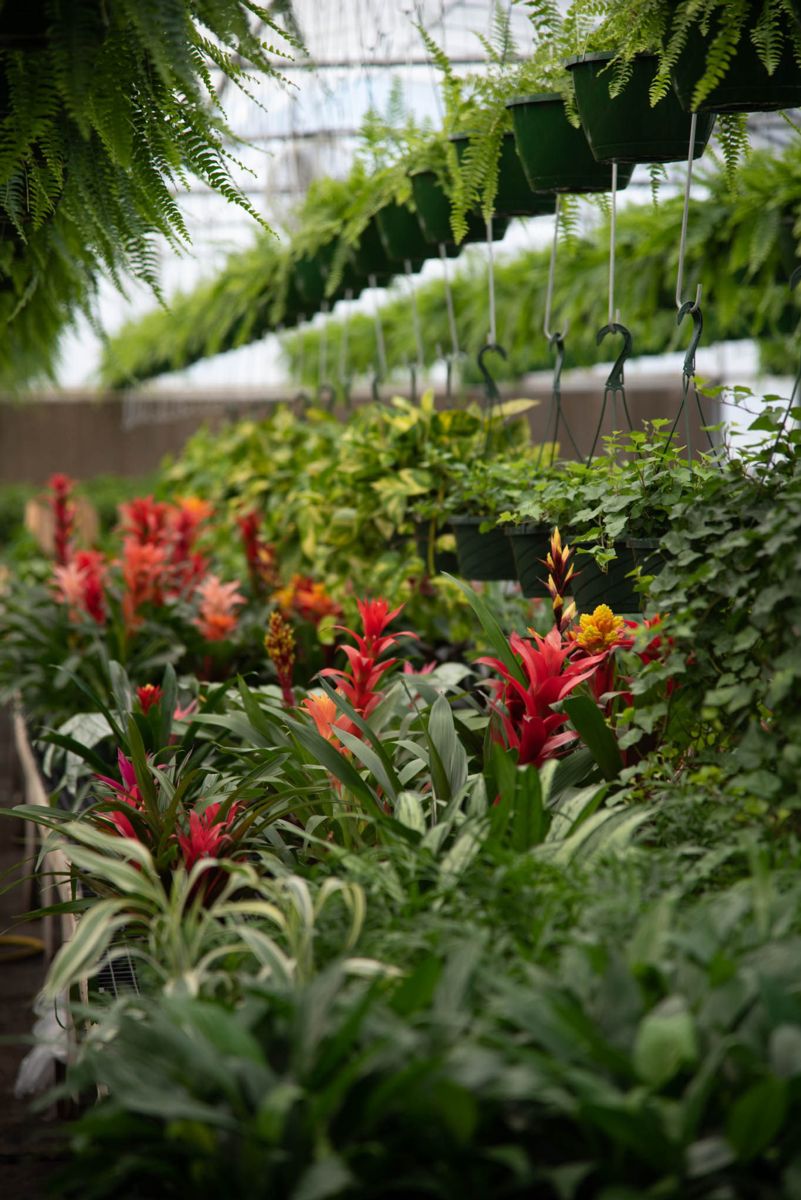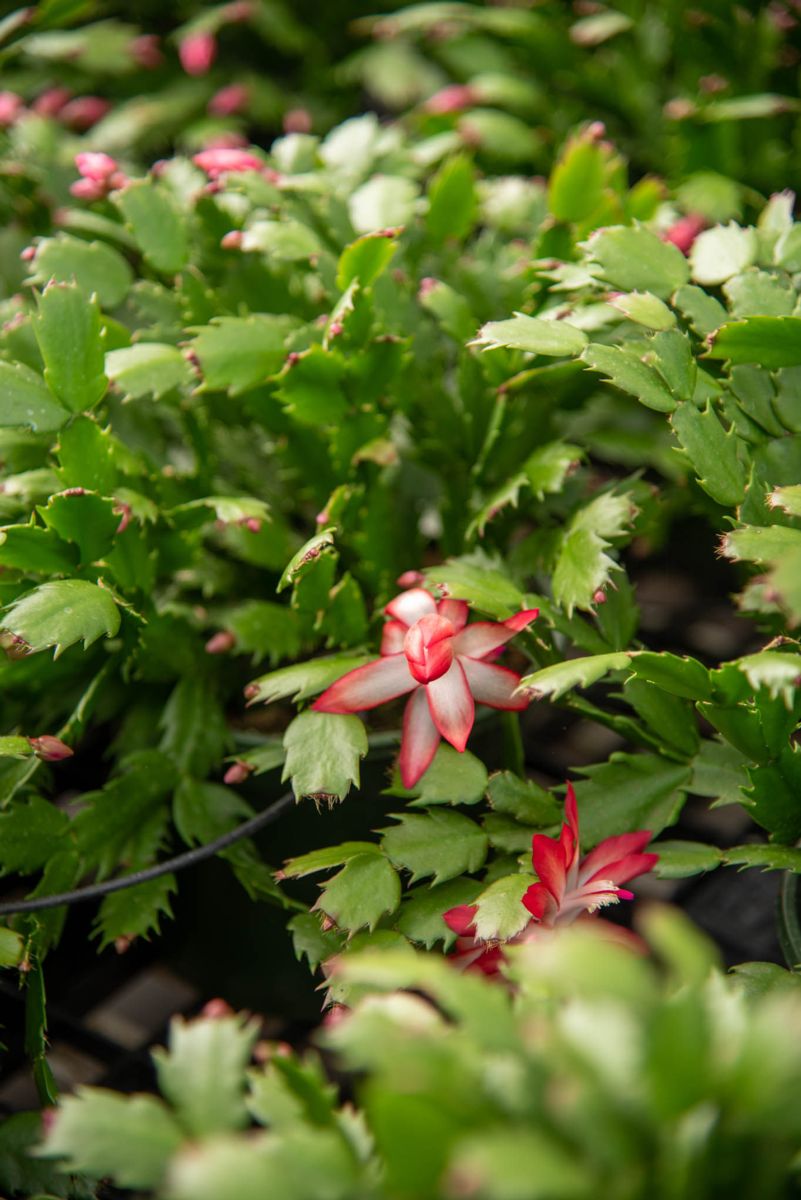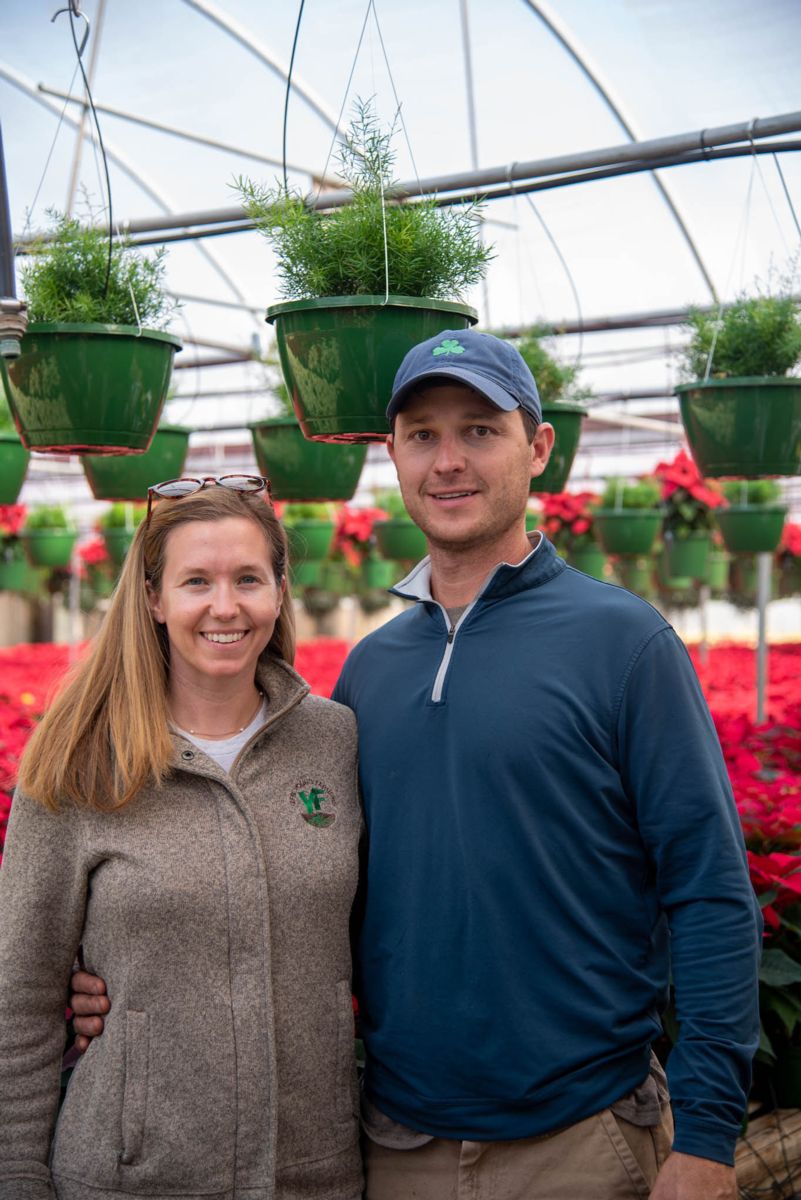GFB News Magazine
Growing Christmas cheer
Posted on November 16, 2021 7:00 PM
By Jennifer Whittaker, Georgia Farm Bureau
Photos by Logan Thomas
Troy Windham and his wife, Rebecca, of Glenwood, Ga., start planning for Christmas as early as March or April every year. That’s when they order the cuttings for the poinsettias and Christmas cactuses they produce.
They grow lots of other plants in their 48,000 square feet of greenhouses, but they’re best known for their holiday plants.
For years, ferns and poinsettias from Windham Greenhouses have made Georgia Farm Bureau’s annual convention merry and bright.
If you’ve ordered poinsettias or Christmas cactuses from FFA Chapters in Albany, Columbus, LaGrange, Macon, Tifton or Savannah, chances are good the plants came from the Windhams in Laurens County.
The Windhams are the third generation to run the family business begun in 1979 by his parents, Larry and Janie, and his grandparents, Helen and Allen Windham.
The poinsettia cuttings ordered in the spring usually arrive from Costa Rica or Mexico by the second or third week of July.
While many families are at the beach, the Windhams and their employees are planting the poinsettia cuttings in 6, 8 and 10-inch pots.
“It’s literally Christmas in July around here,” Rebecca says laughing. “I’ve tried playing Christmas music, but they’ve all told me to stop.”
Article continues below

Growing the plants
Each year, the Windhams usually grow about 6,000 pots of 6-inch poinsettias; 1,650 pots of 8-inch poinsettias, 1,000 pots of 4-inch poinsettias and about 800 pots of 10- inch poinsettias. They also grow poinsettia bowls and baskets.
A lot of work goes into growing the tiny cuttings to full, colorful plants that bring joy to so many.
“After we’ve placed the cuttings in the pots, we drench them with fungicide to protect the roots and start them on a fertilizer regimen,” Troy says. “After a few weeks, when the roots reach the bottom of their pot, we pinch the top of the plants’ center stem so the plants will branch out.”
Then, the Windhams go into pest management mode. Whiteflies are enemy No. 1 for the poinsettias. They keep them under control by spraying or drenching the plants with a pesticide.
“Whiteflies are a pretty big problem,” Troy laments. “We pull air in [to the greenhouses] with fans, so in late August to early September, there are whiteflies everywhere. They get sucked in.”
Larry started growing Christmas cactuses about 30 years ago.
“You don’t have to worry about the cactuses like you do the poinsettias,” Larry said. “You can pretty much just plant them and watch them grow.”
They plant their cactus cuttings the week after Mother’s Day because it takes them two months longer than poinsettias to reach their selling size.
Article continues below

Bursts of color
Prompted by the shorter days and longer nights that come as summer fades into fall, the poinsettia blooms gradually transition into a stunning array of colors,
“We don’t have to do any light interruption,” Troy says. “They bloom on a natural cycle.”
As the poinsettias bloom, the Windhams’ greenhouses burst into varying shades of red, white and blended colors. The family grows four different varieties of red poinsettias that peak at staggered times from Thanksgiving into December. These include Euro Glory, Grand Italic and Christmas Beauty.
Sitting beside the reds in the greenhouses are the white poinsettia varieties with names such as White Star, Alaska and Infinity White that conjure up visions of snow.
Then there are the varieties, like Marble Star, Christmas Princess and Red Glitter, with varying combinations of red, white and pink that resemble candy canes.
The Windhams grow Christmas cactus varieties with red, white, salmon, purple, yellow and orange blooms sold in 4 and 7-inch pots and 10-inch hanging baskets.
Article continues below

Selling Christmas
“We start shipping out our poinsettias and Christmas cactuses the second and third week of November and by Thanksgiving, we’re really on a roll,” Troy said.
The Windhams wholesale their holiday plants to florists, garden centers and to organizations for fundraisers.
“Our biggest sales of poinsettias and cactuses are FFA Chapters that sell them as fundraisers,” Rebecca said.
Some churches also buy the holiday plants to decorate their sanctuaries.
Greenhouses are always producing
Year round, Windham Greenhouses serve as a foliage broker, buying peace lilies, pothos, ivy and numerous other plants from Florida growers and then selling them to independent florists and garden centers.
COVID-19 pandemic increased demand for this side of their business.
“People sitting at home looking at Pinterest was great for our green foliage business,” Troy said. “The real hot thing during this time has been novelty plants that people are seeing online.”
The Windhams also grow an assortment of seasonal annuals such as geraniums, petunias and pansies for landscapers.
Article continues below

Troy &Rebecca Windham are the third generation of their family to run Windham Greenhouses in Laurens County.
A family tradition
Troy grew up hanging out in the greenhouses that his and Rebecca’s children, Dottie and Stokes, now roam.
“I was an only child, so I knew inevitably this [taking over the greenhouses] is what was going to happen,” Troy said.
Rebecca, who grew up in Dublin, is thrilled to have joined the family business.
“I love being here. There’s nothing like being out here working with plants,” Rebecca said. “The good thing is I can bring the kids to work with me. They love it out here. It’s just a really good environment to raise a family.”